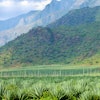
Every year, nitrogen used to fertilize corn fields in the Midwest leaches into the Mississippi River and out into the Gulf of Mexico. Experts say the fertilizer feeds a giant algae bloom, which eventually dies and settles to the Gulf floor, consuming oxygen and suffocating marine life. The area is known as a “dead zone,” and many say the federal government’s ethanol policies are to blame.
“There is a correlation between the increased acreage of corn being planted and fertilized in the Midwest and the size and persistence of areas of hypoxia off the Mississippi River, commonly known as the “dead zone,” said Dr. Larry McKinney, Executive Director of the Harte Research Institute for Gulf of Mexico Studies at Texas A& M University-Corpus Christi.
McKinney participated in a breakfast briefing about the effects of federal ethanol polices on the health of the Gulf of Mexico on October 29, in Washington, D.C. The briefing was been organized by the Congressional Sportsmen’s Foundation.
The breakfast briefing focused on potential reforms in the renewable fuel standard and its impacts on fish and wildlife habitat, water quality, and marine fisheries. The mandate to use ethanol as a fuel additive was an effort to reduce United States dependence on foreign oil when it was first introduced six years ago.
“I think we need to reconsider federal policies that result in such unintended consequences or at least develop and fund federal actions to mitigate the damage,” said McKinney
Experts say the ethanol polices now in place have had unintended and negative consequences on the our most valuable coastal resource, the Gulf of Mexico, as they have contributed to creation of a growing and ever more persistent area of hypoxia off the coast of Louisiana, commonly known as the “dead zone.” In 2013, the “dead zone” covered an area of 5,840 square miles.
The bi-partisan Congressional Sportsmen’s Foundation includes nearly 300 members of the U.S. House and Senate representing almost all states. The CSF works at both the state and federal levels on numerous policy issues.
















